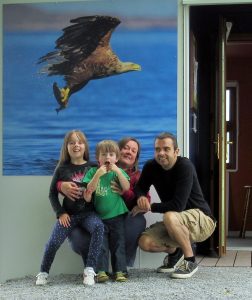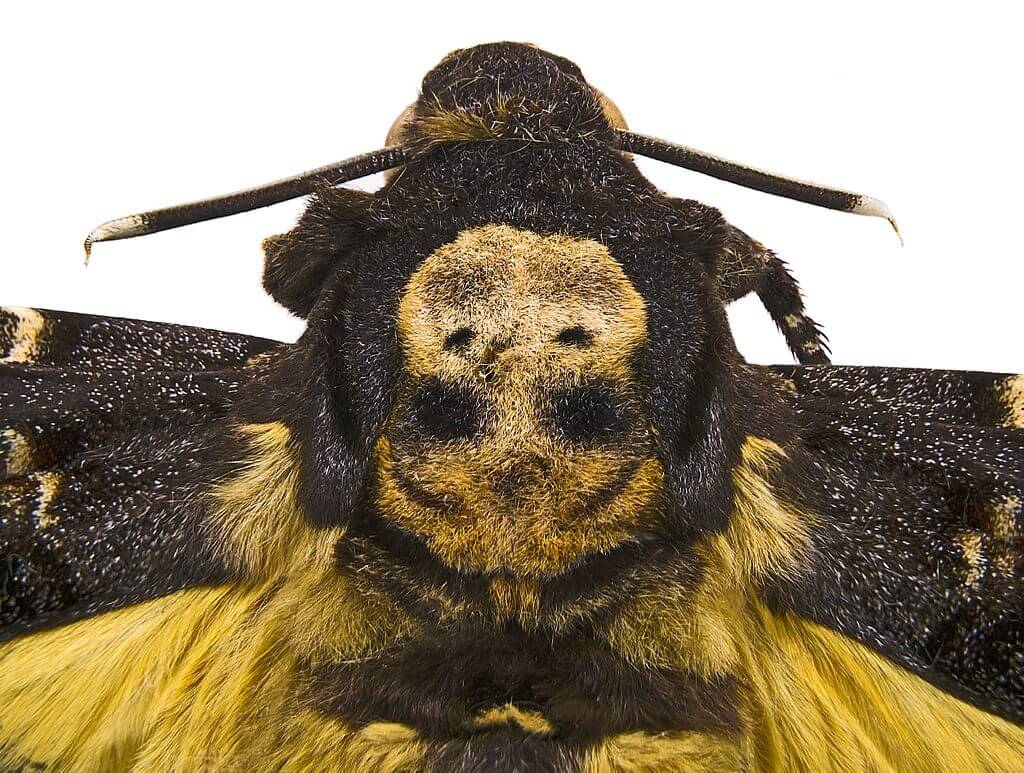 Sue Croxford is the winner of the Invertebrates Category in this blog’s writing competition. A copy of Remarkable Birds is in the post to her.
Sue Croxford is the winner of the Invertebrates Category in this blog’s writing competition. A copy of Remarkable Birds is in the post to her.
Sue writes: I am lucky enough to live in the beautiful Chiltern hills with my husband, two children and a bonkers labrador. We spend a lot of time outside exploring the weird and wonderful wildlife all around us and a few years ago my bug mad daughter and I started writing a blog about some of our discoveries. I enjoy writing and have written guest blogs for BBOWT and had the occasional piece published in magazines and local newspapers. I also contributed to the Spring and Autumn books published by the Wildlife Trust and edited by Melissa Harrison.
Voluptuous Death
Our house was full of butterflies and moths when I was growing up. Thankfully, the practice of killing immaculate specimens and pinning them into a display case was going out of fashion. People wanted to see them flying freely in something resembling their natural environment, so butterfly houses were popping up around the country. That’s where my parents came in, breeding butterflies and moths to supply this new type of attraction.
Our conservatory, maintained at a steamy tropical temperature, was home to delicate heliconius butterflies, exotic swallowtails and huge moon moths. Our back garden was full of food plants; fennel for the swallowtails, milkweed for the monarchs and masses of privet for the hawkmoths. My father jokes that their village still has no privet bushes in it, as our hawkmoth caterpillars ate the lot. But my most vivid memory of that time is of my mother lining up a dozen death’s-head hawk-moths in front of bottle tops full of honey water. I would help her uncurl their thick, stubby proboscis, guiding it towards the sweet, sticky juice. They’d enthusiastically guzzle it down, joyfully waggling their proboscis from side to side as the level of the liquid visibly dropped. Whilst it wasn’t the most conventional upbringing (it took quite some explaining when my German exchange student came to stay), it gave me a lifelong fascination with butterflies and moths. One which I am pleased to see seems to have been passed on to my bug mad daughter.
Death’s-head hawk-moths are magnificent. Strong, stocky moths, with a wingspan of up to 12cm, they’re Britain’s largest moth. Although not native to our shores, residing in South Africa, Southern Europe and parts of Asia, they very occasionally migrate to Britain in the autumn. They’re the brutes of the moth world, with a fearsome reputation to match. Sporting an uncanny likeness to a human skull on their thorax, just behind their head, these lepidoptera pirates are well known for raiding bee hives in search of honey, making themselves chemically invisible to the bees. In addition, when alarmed they let out a loud series of squeaks and raise their bodies up and down to deter would be predators.
The death’s-head hawk-moth has long been reputed to be an omen of death and destruction, and as such has been vilified throughout history. Its appearance in the royal bedroom was blamed for one of King George III infamous bouts of madness and even the French revolution was rumoured to come about because of the emergence of a large number of the moths around the same time. Its Latin name, Acherontia Atropos, only adds to its ominous reputation. Acherontia comes from Acheron, a river in the underworld in Greek mythology and Atropos is from the black-veiled goddess responsible for cutting the Thread of Life from every mortal.
The moths have appeared in art, literature and film throughout the years. Thomas Hardy wrote about them as a prophecy of doom in Return of the Native, they were eaten by the lunatic Renfield in Bram Stoker’s Dracula and were a symbol of troubled times ahead in William Holman Hunt’s painting The Hireling Shepherd. However, the moths notoriety was truly established when Thomas Harris used the pupa as the grisly calling card of serial killer Buffalo Bill in the film The Silence of the Lambs. The appearance of the moth on the book cover and, most famously, the film’s promotional poster catapulted it into the public psyche. From that point on, the death’s-head hawk-moth would forever be associated with the macabre and the gruesome. In fact the image of the skull on the moth covering Jodie Foster’s mouth has been exaggerated. An iconic image from Salvador Dali’s “In Voluptas Mors” (Voluptuous Death), where naked women were cleverly arranged to resemble a human skull, was superimposed over the top.
Many creatures have an unfair reputation, but few as much as the death’s-head hawk-moth. A quirk of nature that produces a pattern representing a human skull, a loutish personality and a name to inspire fear has established the sinister infamy of this striking moth. When they do occasionally migrate far enough north to appear in this country, the tabloid newspapers run with sensational headlines such as “Is this moth a sign of the end? Foreboding doomsday death’s-head hawk-moth spotted in UK” and even “Grab your Flightsaber! It’s a moth that looks like a Stormtrooper”. In reality they are completely harmless, beautiful moths.
A couple of years ago I was given a few death’s-head hawk-moth eggs and my daughter and I raised the caterpillars. Whilst not on the same scale as my parent’s endeavours all those years ago, it gave me a real sense of familiarity, watching the eggs hatch, then grow from minute pinheads into huge, bloated caterpillars the length of my hand. They ate half a buddleia bush by the time they pupated, eventually hatching out to our great delight. Untroubled by, or possibly unaware of, their reputation, my daughter gave them the blood-curdling names Bob and Betty. She handled them carefully, delighting if they squeaked at her and even attempting to feed them honey water. It was more difficult than I remember. My recollection is of them lined up patiently waiting to be fed, but Bob and Betty seemed more interested in dashing around the table like squeaking mice. Apparently they learn they’re going to be fed, so will sit quietly and wait for the honey water. I’m not sure Bob and Betty ever quite got to that point!
The death’s-head hawk-moth is feisty, remarkable and delightfully bizarre. Always hopeful that we might just catch one, we’ll definitely be putting our moth trap out in the back garden this autumn. Who knows, one may just swoop in and play trick or treat on us this Halloween.
Trick or treat? … Definitely a treat!

Well won; what a great story. Thanks, Sue, for all the detailed entomological, cultural and historical information.
What apparitions and revelations – a creature that that can make itself chemically invisible to a hive of bees.
Now, that really is spooky. The uninvited guest or rather the poltergeist.
Oct. 11. Found the Sphinx Atropos, or death’s head-moth, a noble insect, of vast size: it lays it’s eggs on the Jasmine. When handled, it makes a little, stridulous noise. [Gilbert White’s Journal for 1777].
Jasmine? Is that a usual food plant for the d h h moth?